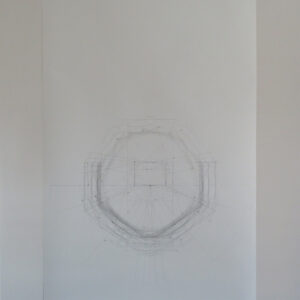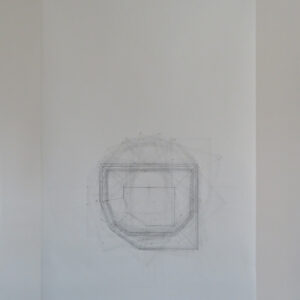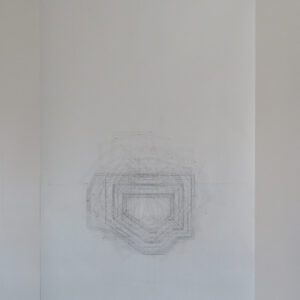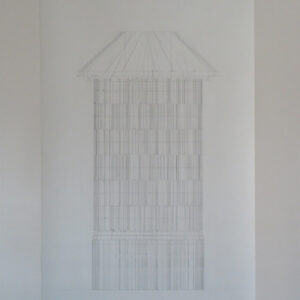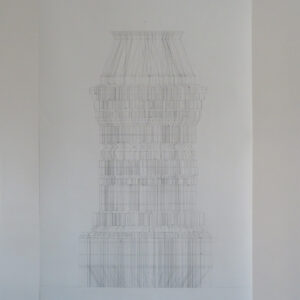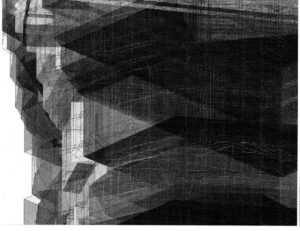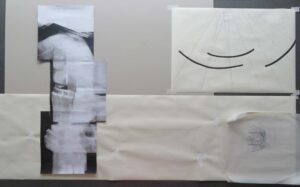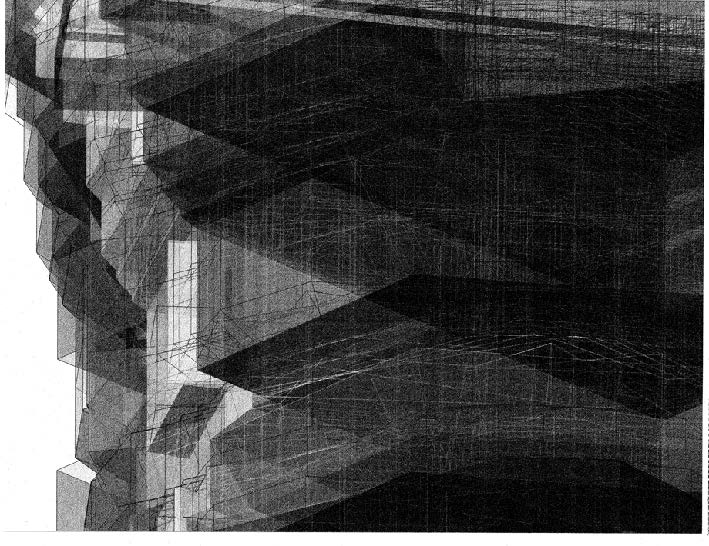The process of finding recursivity in space, was heavily influenced by three interests important to the development of the project. Firstly, photography and the methods created combining the camera and its movements. Secondly, the element of time and the different perspectives on the growth of a space. And finally, the element of movement in pulsing chaos, and how, these movements can cause a blurriness in which new spatial elements can be found. These concepts made me look for a space, or a concept, where the three could come together. The space was found under a bridge, a passage space, where no real time is spent. Because of the lack of time spent there, time suspends in this space. Not only is the space heavily influenced by rhythmic movements, water and people both passing by in metrical patterns of fleetingness, the space allows traces to exist, grants them a plane to dwell on. These traces are details, left by the moving world, inhabiting the static world. They become part of the space by creating new patters and borders.
The time-photos, photos captured by photographing previously taken footage with a shutter time of six seconds, taken of one specific part of this space, also carry traces within them. Traces of different perspectives in which the detail, the column, was looked at. In this column I see recursivity, the possibility to look at a space with that space having to capacity to conversate with itself. I want this column to go into dialogue with me, my movements and most importantly, with itself.
By recreating the movements made with the camera, in the drawings we architects are most familiar with, plan and section, I try to look through the space, exploring the new found details as if I am looking at an X-ray. The very heavy structure of the column, suddenly contains a certain lightness. It becomes blurry again, a blur I also recognise in the video fragments of chaotic movements. The fog caused by the metrical rotation of multiple lines give rise to new details. In the new found chaos of lines in plan and section, a new plan and section can be found by looking closer. By focussing on specific new planes and letting other planes disappear, new constructions of details rise to the foreground. The combination of the new plan, section and time photos of the column, create a new column.
Within the new formation of the column, new details are focussed on. The new details are represented as light weight structures, wireframes. They exist between the 1-1 scale and the nano-scale, a new hybrid space. The ending of the first cycle is marked by turning these details to stone again, letting them exist in their new form, in one perspective drawing. This recursive cycle of looking for new details and connections is repeated three times in total. Three cycles in which, each column itself gave way to the creation of a new column, thanks to its recursive nature and the existence of traces through different movements.
The traces of one cycle become the details of another. They become a new hybrid spaces, in nascendi, containing traces from its previous forms, waiting to go into dialogue with itself again. Waiting for new movements to happen around them.
A hybrid between time and space, creating a dialogue in rhythm.
A hybrid between the camera and the drawing.
A hybrid between the 1-1 scale and the nanoscale.
A hybrid between traces and the given space.
A hybrid between final and infinite.
One cycle in twelve steps
A multiplication of the number three.
- Tracing the movement around an architectural element by taking six video’s, each one holding the camera at a different angle.
- Taking pictures of the six fragments, each one being six seconds long, with a shutter time of six seconds.
- Tracing the movements captured in the photos in plan. Rotating the plan twelve times around the same axis.
- Tracing the movements of the plan, in section. Rotating the section twelve times around the same axis.
- Drawing the new plan and section on a scale 1:3.
- Creating a digital model, incorporating the movements in lines of the plan and the section.
- Taking six pictures within the digital model, using the same perspectives as with the physical camera.
- Printing the six pictures and creating a new formation of the same element within the different perspectives.
- Scanning the edited wireframe collages, with a resolution of 600 dpi.
- Combining and drawing the wireframe of the new formation on a scale 1:3.
- Creating a new element out of the rotated plan and section and the new perspective drawing with a new plan, section and perspective drawing.
- Repeating the cycle of thirds, three times, creating a new formation of the same element each cycle.
